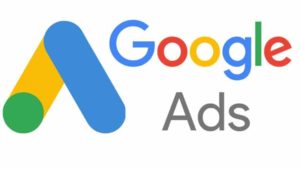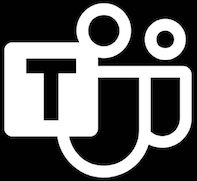Google Adwords
Google Adwords
Google Adwords (PPC) Advertising
Grow your business with Google Ads
Get in front of customers when they’re searching for businesses like yours on Google Search and Maps. Only pay for results, like clicks to your website or calls to your business.
Start now
 You only pay for results. Visit https://www.google.ca/adwords for more info.
You only pay for results. Visit https://www.google.ca/adwords for more info.
No visit, no fee
Signing up for Google AdWords is free. You only pay when someone clicks your ad to visit your website, or calls you. In other words, when your advertising is working.
Start with any budget
You set your own budget, so your costs will depend on what you are trying to accomplish with your advertising. Some businesses spend tens of thousands of dollars a month, and others are comfortable investing several hundred.
Let us Help you
Managing your own Adwords campaign can be time consuming and complex, we are here to help you succeed with your online marketing campaign.
Google AdWords is an online advertising service that places advertising copy at the top, bottom, or beside, the list of search results Google displays for a particular search query. The choice and placement of the ads is based in part on a proprietary determination of the relevance of the search query to the advertising copy. AdWords has evolved into Google‘s main source of revenue. Google’s total advertising revenues were USD $42.5 billion in 2012. AdWords offers pay-per-click (PPC), that is, cost-per-click (CPC) advertising, cost-per-thousand-impressions or cost per mille (CPM) advertising, site-targeted advertising for text, banner, and rich-media ads, and remarketing. The AdWords program includes local, national, and international distribution. Google’s text advertisements are short, consisting of one headline of 25 characters, two additional text lines of 35 characters each, and a display URL of 35 characters. Image ads can be one of several different Interactive Advertising Bureau (IAB) standard sizes.
Sales and support for Google’s AdWords division in the United States is based in Mountain View, California, with major secondary offices in Ann Arbor, Michigan and New York. The third-largest US facility is in Mountain View, California, headquarters. Engineering for Google AdWords is based in Mountain View, California.
Google has an active official public help and support community maintained and frequented by highly experienced Adwords users (referred to as “Top Contributors”) and Google employees.
AdWords speciality and characteristics
IP address exclusion
In addition to controlling ad placements through location and language targeting, placements can be refined with Internet Protocol (IP) address exclusion. This feature enables advertisers to exclude specified IP address ranges where they don’t want their ads to appear.
Up to 500 IP addresses, or ranges of addresses, can be excluded per campaign. All ads in the campaign are prevented from showing for users with the IP addresses specified.
Location-based exclusion is also offered as a method of narrowing targeted users.
AdWords Express
Google Adwords Express is a feature aimed at small businesses that reduces the difficulty of managing an ad campaign by automatically managing keywords and ad placement. AdWords Express was previously known as Google Boost.
AdWords Express also supports small business that don’t have a website, allowing them to direct customers to their place page.
Placement-targeted advertisements (formerly Site-Targeted Advertisements)
In 2003 Google introduced site-targeted advertising. Using the AdWords control panel, advertisers can enter keywords, domain names, topics, and demographic targeting preferences, and Google places the ads on what they see as relevant sites within their content network. If domain names are targeted, Google also provides a list of related sites for placement. Advertisers bid on a cost-per-impression (CPI) or cost-per-click (CPC) basis for site targeting.
With placement targeting, it is possible for an ad to take up the entire ad block rather than have the ad block split into 2 to 4 ads, resulting in higher visibility for the advertiser.
The minimum cost-per-thousand impressions bid for placement-targeted campaigns is 25 cents.There is no minimum CPC bid, however.
Remarketing
Remarketing is an AdWords feature that allows you to show ads to those that have already been to your website. To start using remarketing, add the remarketing tag (a small snippet of code that you get from AdWords) across all pages on your site. Many sites have a single footer for all pages where you can place your remarketing tag for use throughout your site. Once you’ve added the remarketing tag to your site, you can create remarketing lists for any of your webpages. For example, you could create a remarketing list for visitors to your most popular product category. The remarketing tag tells AdWords to save visitor from that page of your website to your “Popular category list.” You can then create a new campaign that targets this list of previous visitors. The AdWords Team at Google has a Google Hangout on how to set it up here.
AdWords distribution
All AdWords ads are eligible to be shown on www.google.com. Advertisers also have the option of enabling their ads to show on Google’s partner networks. The “search network” includes AOL search, Ask.com, and Netscape. Like www.google.com, these search engines show AdWords ads in response to user searches, but do not affect quality score.
The “Google Display Network” (GDN) (formerly referred to as the “content network”) shows AdWords ads on sites that are not search engines. These content network sites are those that use AdSense and DoubleClick, the other side of the Google advertising model. AdSense is used by website owners who wish to make money by displaying ads on their websites. Click-through rates on the display network are typically much lower than those on the search network and quality score for Display Network is calculated separately from Search network.
Google automatically determines the subject of pages and displays relevant ads based on the advertisers’ keyword lists. AdSense publishers may select channels to help direct Google’s ad placements on their pages, to increase performance of their ad units. There are many different types of ads that can run across Google’s network, including text ads, image ads (banner ads), mobile text ads, and in-page video ads.
Google AdWords’ main competitors are Yahoo! Search Marketing and Bing Ads (formerly Microsoft AdCenter).
In 2010, Yahoo formed a partnership with Microsoft, giving Microsoft the control over powering the Yahoo search marketing ads. Both accounts are now run through Bing Ads. When ads are displayed on Yahoo now, it is powered by Bing Ads and is run through the Microsoft software interface.
AdWords account management
To help clients with the complexity of building and managing AdWords accounts, search engine marketing agencies and consultants offer account management as a business service. This allowed organizations without advertising expertise to reach a global, online audience. To help regulate Best Practices for AdWords Management, Google implemented the Google Partner Program and the Google Individual Qualification Program which require individuals and agencies to meet benchmarks and pass exams.
Google also provides account management software, called AdWords Editor.
Another feature is the My Client Center available to Google Professionals (even if they have not yet passed the exam or budget parameters) whereby a Google professional has access to a dashboard summary of several accounts and can move between those accounts without logging into each account.
The Google Adwords Keyword Planner (formally the Keyword Tool) provides a list of related keywords for a specific website or keyword.
Google Click-to-Call
Google Click-to-Call was a service provided by Google which allowed users to call advertisers from Google search results pages. Users entered their phone number and Google would then call them back and connect to the advertiser. Calling charges were paid by Google. The service was discontinued in 2007. For some time similar click-to-call functionality was available for results in Google Maps. In the Froyo release of Google’s Android operating system, certain advertisements include very similar functionality, where a user can easily call an advertiser. In iOS, phone numbers are automatically recognised as such, and web developers can also provide direct links to the Phone application, providing similar (if not identical) functionality.
Google now offers a mobile click-to-call function which allows searchers to call a business directly rather than going to their website.
Technology
The AdWords system was initially implemented on top of the MySQL database engine. After the system had been launched, management decided to use Oracle instead. The system became much slower, so eventually it was returned to MySQL. Eventually, Google developed a custom distributed Relational database management system (RDBMS) known as Google F1 specifically for the needs of the Ad business, which requires strong consistency, high scalability across data centers and powerful SQL queries. The interface has also been revamped to offer better work flow with additional new features, such as Spreadsheet Editing, Search Query Reports, and better conversion metrics.
Ad content restrictions
As of April 2008 Google AdWords no longer allows for the display URL to deviate from that of the destination URL. Prior to its introduction, Google paid advertisements could feature different landing page URLs to that of what was being displayed on the search network. Google expounds that the policy change stems from both user and advertiser feedback. The concern prompting the restriction change is believed to be the premise on which users clicked advertisements. Users were in some cases, being misled and further targeted by AdWords advertisers.
As of December 2010 Google AdWords has decreased its restrictions over sales of Hard Alcohol. It now allows ads that promote the sale of hard alcohol and liquor. This is an extension of a policy change that was made in December 2008, which permitted ads that promote the branding of hard alcohol and liquor.
Allowed keywords
Google has also come under fire for allowing AdWords advertisers to bid on trademarked keywords. In 2004, Google started allowing advertisers to bid on a wide variety of search terms in the US and Canada, including the trademarks of their competitors and in May 2008 expanded this policy to the UK and Ireland. Advertisers are restricted from using other companies’ trademarks in their advertisement text if the trademark has been registered with Advertising Legal Support team. Google does, however, require certification to run regulated keywords, such as those related to pharmaceuticals keywords, and some keywords, such as those related to hacking, are not allowed at all. These restrictions may vary by location.[35] From June 2007, Google banned AdWords adverts for student essay-writing services, a move which was welcomed by universities.
Google has other restrictions, for example the advertising of a book related to Facebook was restricted from advertising on AdWords because it contained the word “Facebook” in its title — the rationale being that it was prohibited from advertising a book which used a trademarked name in its title.
Prohibited keywords
oogle has a variety of specific keywords (or categories) that it prohibits that vary by type and by country. For example, use of keywords for alcohol related products are prohibited in Thailand and Turkey; for gambling and casinos in Poland; for abortion services in Russia and the Ukraine; and for adult related services or products worldwide as of June 2014. This has prompted debate among the adult industry with many questioning Google’s position as a monopoly.
Read More on Google Adwords





 Text Us
Text Us info@geekmob.ca
info@geekmob.ca Schedule Teams
Schedule Teams
